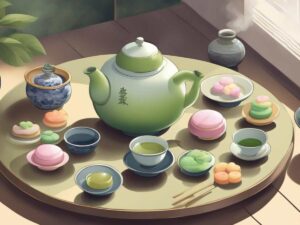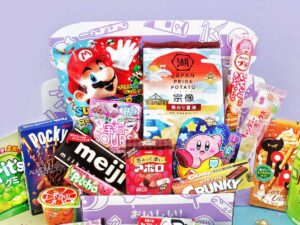Ramune soda is one of Japan’s favorite beverages.
But what has kept Ramune a popular beverage for over 100 years?
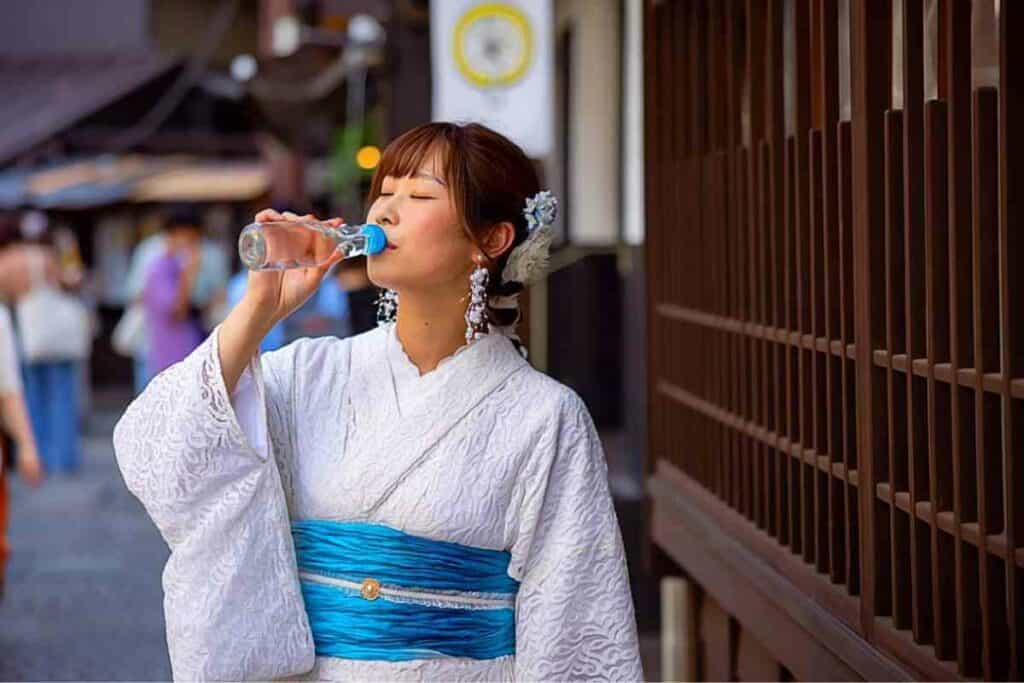
In this article, we answer why Ramune soda is so popular in Japan!
Table of Contents
Why is Ramune soda so popular in Japan
This classic Japanese soft drink has all the ingredients to be extremely popular with the Japanese.
Firstly it is one of the oldest soft drinks in Japan, it still holds some lingering health connotations, and lastly, the unique bottle and fizz just keep folks coming back to it again and again!
[lasso type=”table” id=”24″ link_id=”6834″]
The history of Ramune (ラムネ) soda
A remarkable fact about Ramune, one of Japan’s most popular soft drinks, is that it was invented by a Scotsman, with an Englishman designing the iconic bottle!
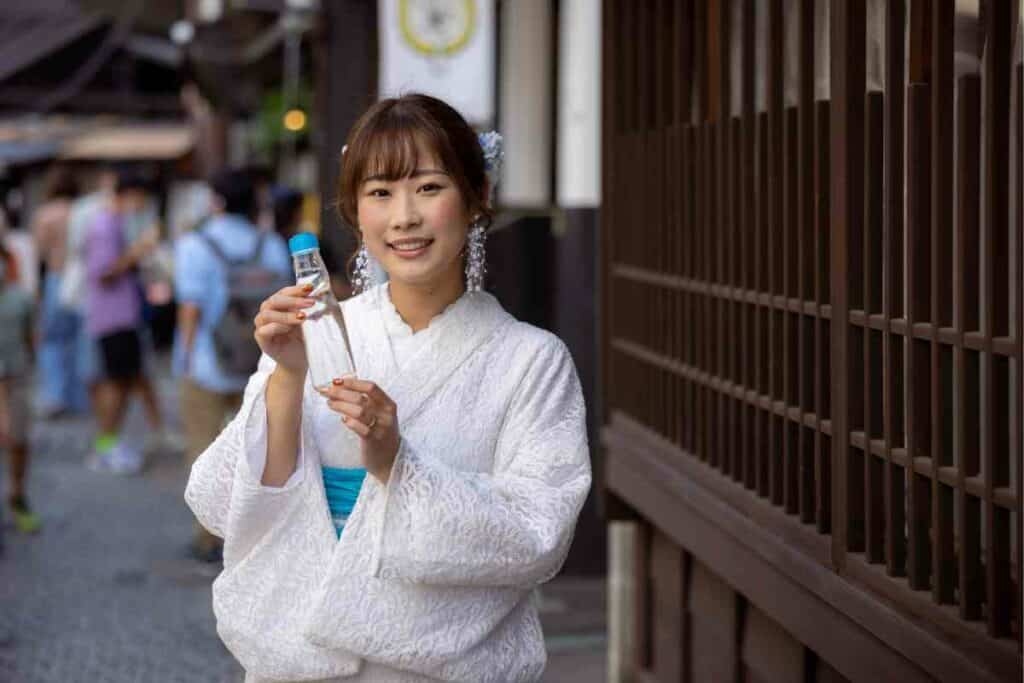
Like Coca-Cola and other classic beverages, Ramune actually started out as a health drink.
Origins of Ramune soda
Ramune soda was originally created by Scotsman Alexander Cameron Sim in the early 1880s. Sim was a pharmacist and importer of medical equipment.
He lived and worked in Kobe, after being posted to Nagasaki in 1869 by the British Royal Navy.
Sim formulated Ramune soda as a health beverage to prevent cholera, using a recipe that was based on lemonade. The classic Coddd-neck bottle and marble seal that the drink is known for was designed by the English engineer and inventor Hiram Codd.
Sim procured an unusual bottle for his carbonated beverage which was originally called Marbu-Soda after the marble in the bottle.
The name ‘Ramune’, derived from the phonetic spelling of lemonade in Japanese was adopted because of the lemonade tast of the original beverage.
Popularity in Japan
Sim found success with his health drink in 1884 when he started to sell the beverage to residents of the Kobe foreign settlement. Soon, it started to be drunk by the local Japanese communities, who enjoyed its distinctive flavor and bottle design.
An advertisement in the Tokyo Mainichi Newspaper extolling its cholera-preventative benefits caused the drink to take off across Japan. Soon this sweet fizzy beverage transitioned from being a health drink to a refreshing summer beverage.
Unique features of Ramune soda
Ramune soda is a very cool and quirky drink that has become a cult classic.
Here are three things that make Ramune soda so popular in Japan.
1. Bottle design
The Codd bottle that is still in use to the present day is a distinctive feature of Ramune soda.
It was invented in 1872 as a novel bottle closure that would reduce the need for corks. The Codd bottle was filled under gas pressure forcing a glass marble to close the neck.
When Marbu-Soda was first released, Sim had to pay for a license to use the patented bottle, and purchase his marbles, sealing rings, and groove tools. Later, dedicated manufacturing facilities were set up in Japan.
The marble in Ramune bottles has fascinated Japanese kids for generations. Often glass bottles were smashed to get at the marbles, potentially causing injuries.
Now that Ramune is sold in plastic bottles, procuring marbles is a little safer.
Here’s how to get at the classic Ramune marble:
2. Carbonation
Ramune soda features unique carbonation that separates the carbon dioxide gas from the beverage while the bottle is sealed. The marble separates the gas from the drink and is held in place by gas pressure.
To enjoy a bottle of Ramune, you have to displace the marble. This is done by pushing the ball into the neck of the bottle when you open it.
You can read about how to open a Ramune bottle in our article: “How to Open a Ramune Bottle”
Once the marble is displaced, the soda will fizz right up. While you drink a Ramune soda , the marble will rattle around!
3. Flavors
Ramune soda is also known for its numerous flavors.
Every flavor is similarly super sweet and fizzy, and the range includes some strange flavors like Wasabi and Curry.
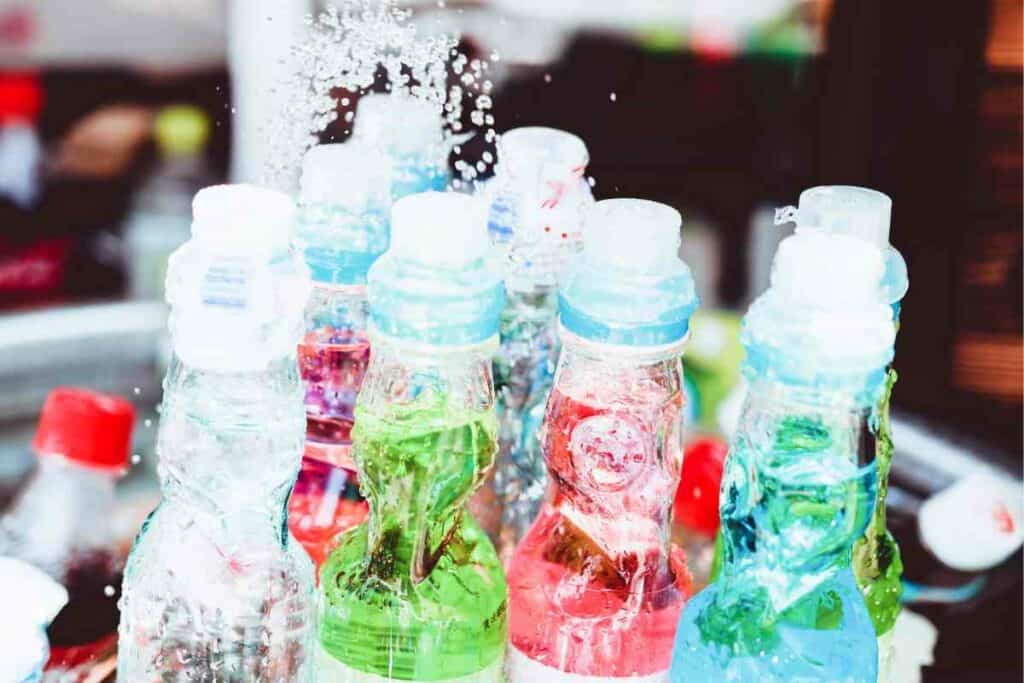
Here is a list of some of the Ramune soda flavors that are currently available:
- Kimura Yuzu Citrus
- Kimura Original
- Hatakosen Watermelon
- Sangaria Orange
- Strawberry Genki
- Blueberry Genki
- Matcha
- Tumeric
- Multivitamin
- Pineapple
- Curry
- Hatakosen Litchi
- Takoyaki
- Kimura Watermelon
- Hatakosen Melon
- Hatakosen Strawberry
- Wasabi
- Collagen
- Sangaria Melon
- Sangaria Peach
The Ramune soda production process
Ramune Soda is owned and distributed by the Asian food conglomerate Nishimoto Wismettac Group which was founded in Kobe in 1912.
Nizona Corporation in Kobe manufactures the drink which is exported around the world.
The most basic ingredients of Ramune soda are:
- Carbonated Water
- Sugar
- Flavor
- Citric Acid
- Sodium Citrate
A variety of additives including flavorings and food colorings are added to great the diverse flavors available.
Here is a video of the Ramune soda manufacturing process:
The cultural significance of Ramune soda
It’s undeniable that Remune soda is now a cultural icon in Japan.
This is because so many Japanese and Japanese ex-pats grow up drinking it.
There are just so many nuances to enjoying this drink including:
- Unwrapping the soda’s special opener
- Pushing down the opener to release the marble
- The clink of the marble when the bottle is opened
- The fizz!
And Ramune soda is going global as the drink increasingly penetrates new markets in America and Europe.
Folks are going crazy for this strange marble soda:
Where can I try a Ramune soda?
Ramune sodas are gradually going mainstream so you may come across them in Walmart and other grocery stores. Another place where you will definitely find a bottle or two of Ramune is your local Asian grocery store.
And, of course, you can get your hands on bottles of Ramune soda by ordering it from Amazon.
Why not sample the very best of Ramune with an 8-flavor variety pack, boxed and shipped to your door:
Rounding up
After sake and green tea, Ramune soda is one of the most Japanese drinks going. It is a fun and fizzy beverage that doesn’t take itself too seriously and anyone can enjoy it.
Trying a bottle is well worth it for experiencing the fizz and trying to get that dang marble out of the bottle!
- Japanese Traditional Sweets (Wagashi): A Guide to Their Origins and Varieties
- A Taste of Japan in Every Bite – Japanese Candy & Snack Box Review
- Bubble Tea vs Boba Compared: What’s the Difference?
- Best Izakaya Foods for a Relaxed Night Out (My Top 10 Picks)
- Edo Kiriko Whiskey Glasses (Japanese Heritage in Every Pour)
- Japanese Viral Foods on Social Media (Discover the Top 10)

